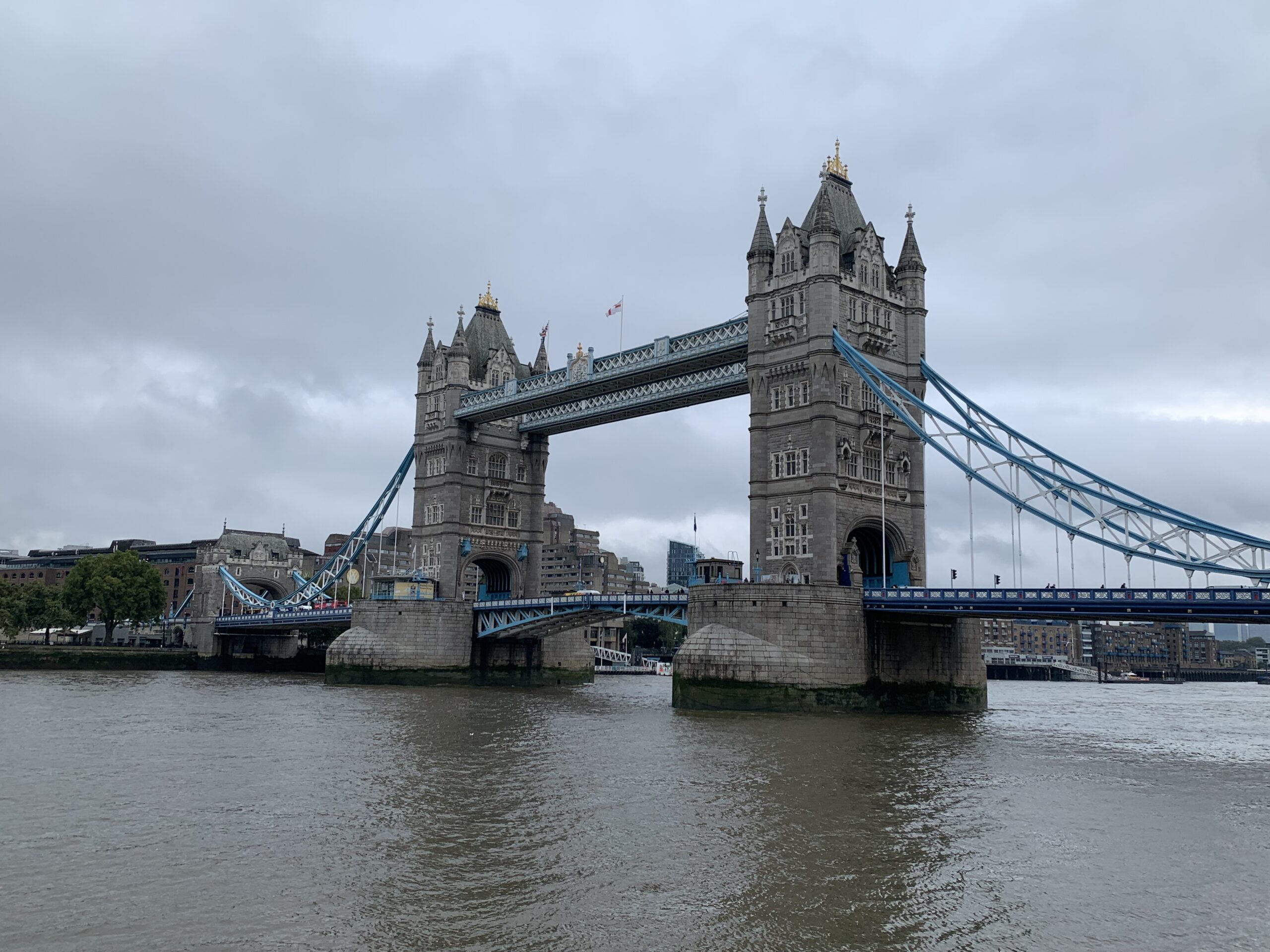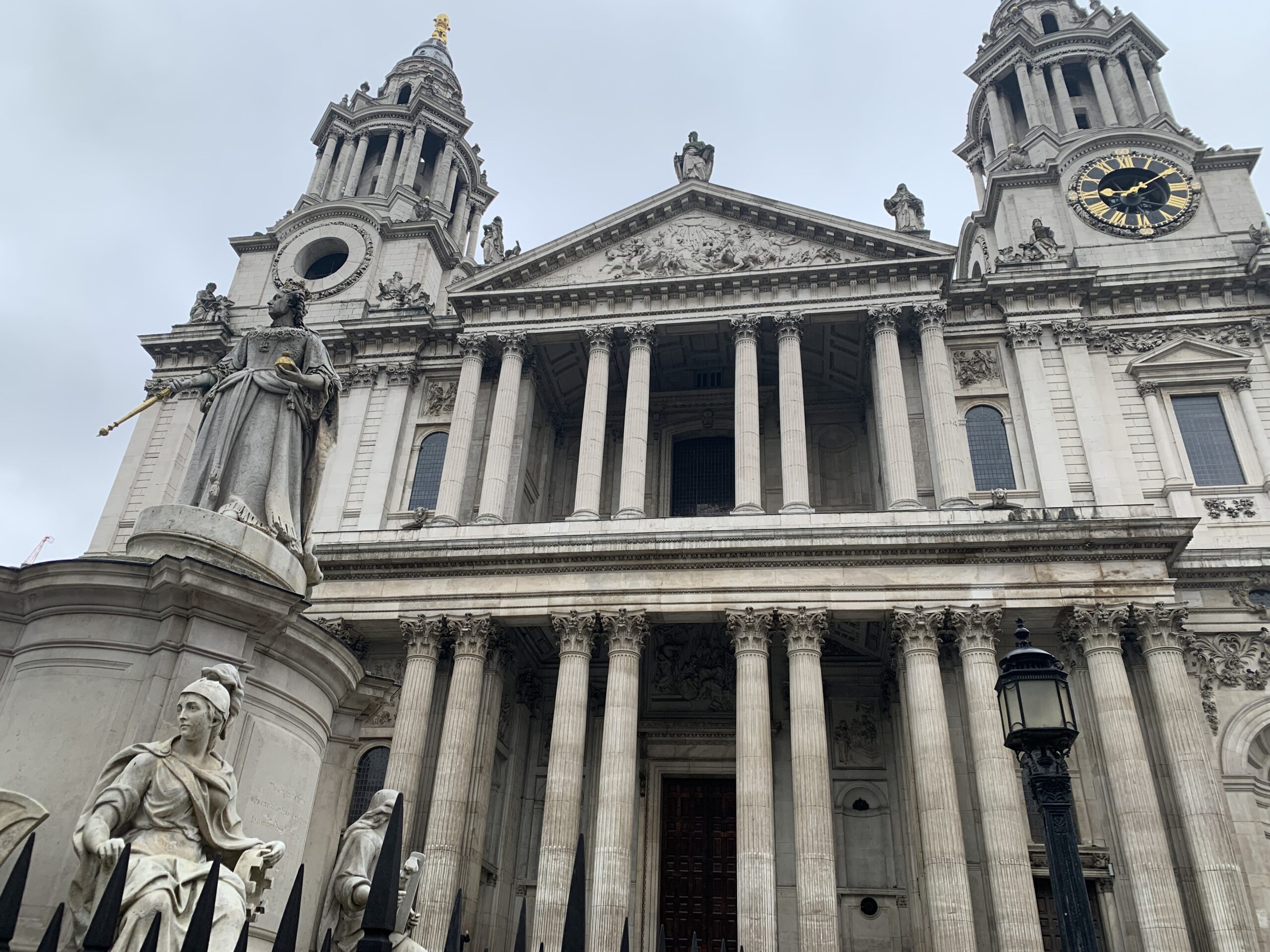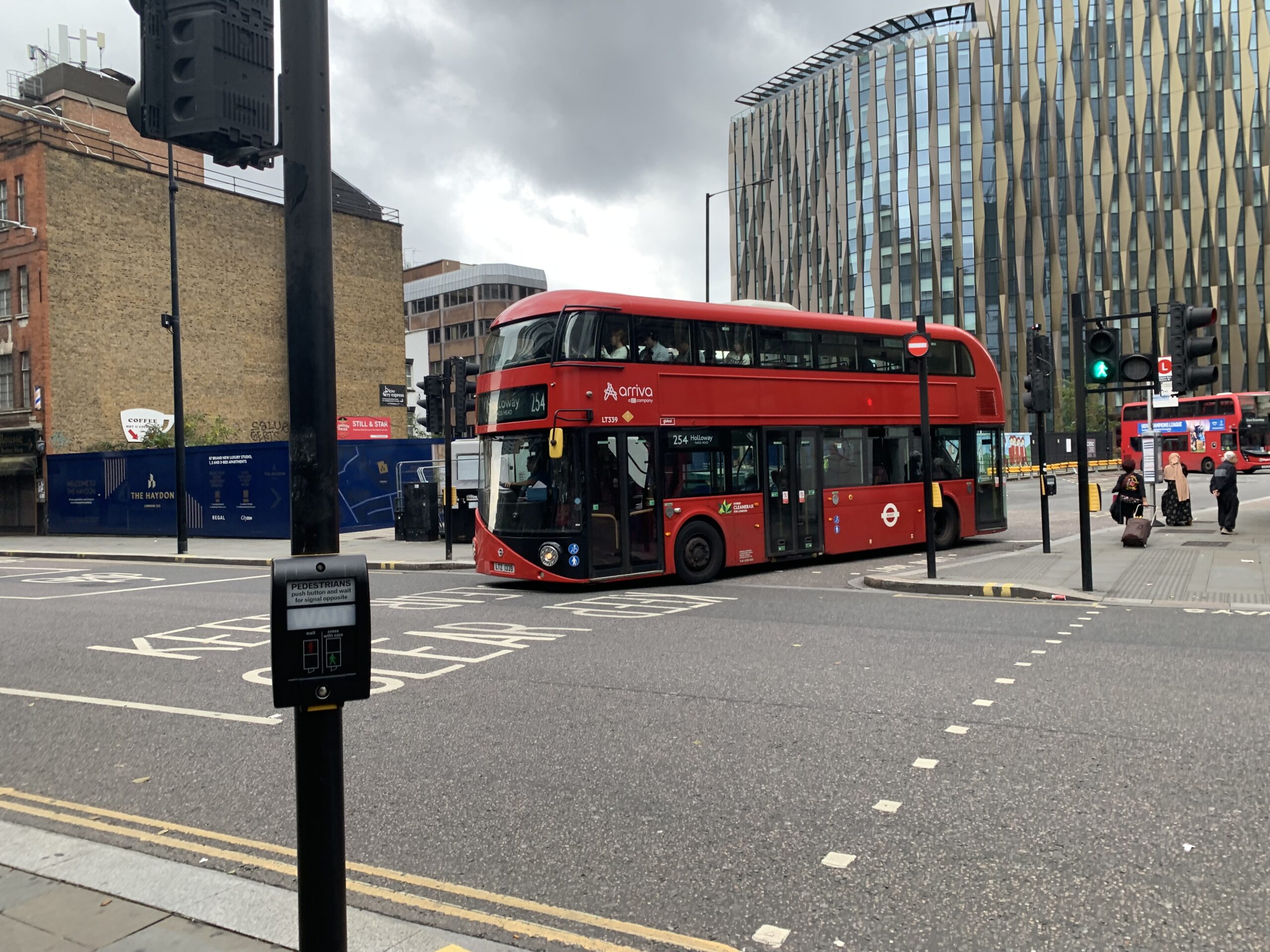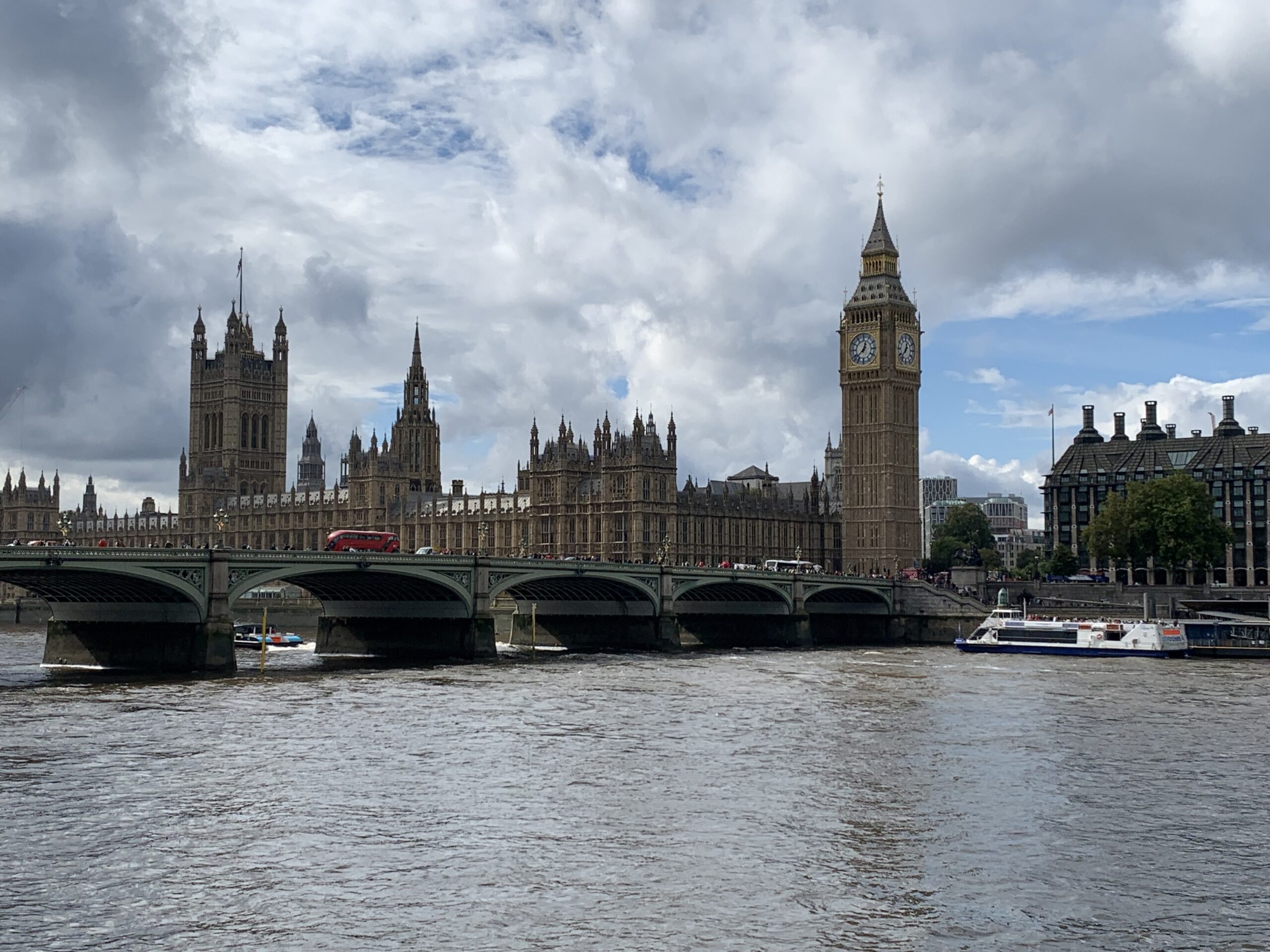Last Updated on 10 October 2024 by Johan
The capital of the United Kingdom can be divided into three distinct parts. The main commercial area is around The City, where Roman London was founded and where the medieval township grew up, dominated by the massive fortress of the Tower of London. Further west along the Thames lays Westminster, the centre of government and administration. The West End—running west from Covent Garden to Oxford Street—is the main shopping and entertainment area. Surrounding this core are districts ssuch as Kensington, Chelsea, and Marylebone, that joined London in the 18th century, but retain a separate identity. London’s attraction is its cosmopolitanism, rivaling that of New York. An imperial capital in the 19th century, it has become a vibrant world city that is home to a fascinating mix of peoples.
Trafalgar Square
One of the most famous Squares in the World – With Nelsons Column, the National Gallery and of course the pigeons. The Column itself is some 170 foot high, wwith the statue of Nelson himself being some 18 foot high. Though one would not think so viewing him from the ground. Admiral Nelson is buried in St Pauls Cathedral.
Named after the Naval Battle of 1805, Trafalgar Square was completed by the mid 1840’s. Nelsons Column is surrounded by 4 bronze lions, on granite plinths, unveiled in 1868, sculpted by Sir Edwin Landseer, and cast by Marocchetti. At the time Landseer was better known for his animal paintings. Fountains and statues, including one of Charles I on horseback, dating from the 17th century adorn the Square. Yet more sculptures in the form of bronze relief’s can be found at the base of the Column depicting scenes from four of Admiral Nelson’s Battles.
On the North side of the Square is the National Gallery, housing masterpieces by Leonardo Da Vinci, Rebens. Alongside is the National Portrait Gallery.
On the west side is Canada House, while in tthe North East corner is the Church of St Martins in the Fields. Off the Square , beyond Admiralty Arch are The Mall itself leading to Buckingham Palace. On the other side of The Square are The Strand and the start of London’s Theatre land.
At Christmas a Norway Spruce tree the gift of the people of Norway stands in The Square, whilst at New Years Eve a crowd numbered in hundreds of thousands see in the New Year.
Booths ssell corn with which to feed the pigeons. Be warned if you hold the tub of food at arms length you will soon have pigeons galore perched on you, including most likely the top of your head.
The Tower of London
Dating from Roman times, indeed part of the Roman Walls are visible immediately outside the entrance to the nearby Tube Station. The Tower itself dates from the time of William the Conqueror. Castle, Prison, Royal Mint, Zoo and home of the Crown Jewels. Be dazzled by The Imperial State Crown, set with the 530 carat Culinan I, of the largest cut diamonds in the World.
The White Tower where Anne Boleyn, the 2nd of Henry VIII’s wives was imprisoned and then beheaded by sword on 19th May 1536. The Bloody Tower, dating from 1225. Where Walter Ralegh and his wife were incarcerated from 1603 to 1616, Ralegh was executed here on 29th October 1618. Climb the steps of the Beauchamp Tower, housing yet more important prisoners. The intricate detail of the stone carvings on the walls, by the prisoners, to help while away the years are most sobering. The Royal Armouries, the mounted horsemen are so grand.
The Beefeaters- Yeoman Warders Take an hhour long guided tour led by a red tunic’d Beefeater. (More properly Yeoman Warders). Except if inclement weather. Have your photograph taken. Don’t forget to ask their permission first- it is rarely refused. At night see the locking up during the Ceremony of the Keys. Advance Ticket Only. View Traitors Gate from the footpath alongside the Thames.
The Ravens Wondering what those large black birds are? They are the Tower’s most famous inhabitants- the Ravens. Legend has it should they leave then the Monarchy will be no more. They do have their wings clipped as a precaution. Not only do these 8 very well cared for birds have their own Ravenmaster, but are given monthly health checks by a vet. Ravens mate for life, last Spring (2000) several eggs were laid, and hatched. ‘Hardy’ is now in his 25th year at the Tower.
Walk the Walls Walk the defensive walls, with great views along the River Thames, looking over the Moat, drained and backfilled in the 1830’s but for 500 years a vital part of the Castles defences. Some stairs and passageways are narrow or steep.
Nearest tube- Tower Hill. Closed Christmas Eve, Christmas Day, Boxing and New Years Days. Recorded Guides Also available. Wear sensible shoes.
Tower Bridge

Opened in 1894, Tower Bridge is an enduring symbol of London.
Though river traffic is far less than a hundred years ago the twin bascules are still opened for river traffic several times a week. The London Bridge Experience offer a chance to climb the towers, and view the River from the glass sided walkways, some 140 feet above the Thames, as well as seeing the original steam engines powering the lifting mechanisms for raising the bascules.
Fine views across to Butlers Wharf and on the other bank the Tower of London and St Katherine’s Dock. In the early nineteenth century the Dock would have been full of sailing ships from around the world, discharging their cargoes. Nowadays the Docks are a popular tourist destination in their own right with shops, and a display of sailing barges in the marina.
Tower of London Alongside the River on The South Bank is the well signed Silver Jubilee Walk, dotted along its length with information boards covering the sights and also the history of the River.
St Paul’s Cathedral

Sir Christopher Wren’s masterpiece, and also his burial place. Situated at the top of Ludgate Hill, in the City of
London, Still to an extent today towering over the City of London at 356 foot (108m) to the ball and lantern. St Paul’s Cathedral’s Dome is one of the largest in the World. The present Cathedral was built between 1665 and 1710 following the Great Fire of London in 1666.
The Whispering Gallery 100 foot up, where a whisper is audible on the opposite side. The imposing Nave is 146m long with carvings by Grinling Gibbons. Final resting place of LLord Nelson and many other statesmen and soldiers.
The Cathedral is illuminated at night, the West Door being particularly imposing.
The Millennium Bridge Just South of the Cathedral is a new 320 m long footbridge across the Thames, offering a direct route to the South side of the River, and to The Tate Gallery of Modern Art and the Globe Theatre.
When first opened to the public the bridges slender construction resulted in wobbling that were too much for some ppeoples comfort. Engineers are now fitting dampers to reduce movements to more acceptable limits, and it is hoped this spectacular bridge, the first crossing of the Thames in a hundred years, will be reopened soon.
The Tate Modern was opened bby Her Majesty the Queen in May 2000 and houses The Tate’s collection of modern art from 1900 to the present day. Works by Picasso, Pollock and Warhol to name but three.
Nearby is the Globe Theatre a faithful reconstruction of Shakespeare’s Playhouse. With open air performances and exhibitions providing an fascinating insight into Elizabethan Life
Picadilly Circus
No visit to London is complete without seeing the West End, seen here in the bright lights of Piccadilly Circus. Romantic Eros, erected in 1892 as memorial to Lord Shaftsbury is much photographed. The winged angel in fact depicts Charity, and is made of aluminum.
The London Underground
Providing a convenient way to see the Tourist Sights. Long gone are the ddays of graffiti covered rolling stock, and litter strewn platforms. Trains run from 5.30 am to past mid-night every day. Lines are denoted by color, for example the Circle Line is colored yellow on the Map, whilst the Bakerloo Line is marked in brown, making routes easy plan and follows. Above ground stations is rarely more than a short walk away, their entrances marked by signs displaying the logo shown left. At peak time’s services run every 5 minutes or sso. Don’t forget to MIND THE GAP.
The London Bus

Providing, like Big Ben, an enduring symbol of the Capital, with their distinctive red livery. Covering the whole of the City on an extensive networks of routes 24 hours a day – Night Buses running late into the night. For example hop on a No 8 for St Paul’s Cathedral from Oxford Street, returning on a No 9 via Trafalgar Square.
Buying Tickets and Travel cards. One of the most popular ways is to buy a Travelcard. A Zone 1 and 2 card covers most of the Central Area. These, in the form of One Day, Weekend, 7 Day and Family Travelcards offer good value for money, and can be used not just on The Underground, but also on Buses and The Docklands Light Railway (DLR) The DLR links the centre of town with Greenwich and East London, places such as Greenwich and the Cutty Sark, or Canary Wharf with its skyscrapers and spanking new developments. Don’t be alarmed, trains on the DLR are driverless. Travelcards and Underground maps are available from all Stations and many Tourist Information Centres.
Official Open Topped Bus Tours Visitors with little time to spare mmay wish to take such a Tour in an Open Topped Bus. Available in up to five languages, and with an informed commentary they provide an ideal way to ‘See the Sights’. Please note Travelcards are not valid on these.
London Eye
The British Airways London Eye. At 135 m high the Worlds largest observation wheel. Offering fine views over the Capital, west looking down on the nearby Houses of Parliament, north across to Buckingham Palace, over to Canary Wharf in the East. On a really clear day Windsor Castle some 25 miles away can be seen. Though only opened to visitors early in 2000 the Eye has already proved itself to be a popular London tourist attraction.
32 capsules, each accommodating 25 people, capacity up to 1600 passengers each hour.
Operating from 9am to 10pm in summer and from 10 am to 6pm in winter. Opening times may vary without notice .Each flight last 30 mins. At night London takes on an entirely different look. 135m high. Though it is advisable to buy your tickets in advance , a limited number are on sale on the day from the Ticket Office in the adjacent County Hall. Arrive early and expect tto queue. Else try late in the day when most tourists gone.
Houses of Parliament and Big Ben London

‘The Mother of all Parliaments’ more properly called the Palace of Westminster. The original palace dating back to the times of Edward The Confessor was burnt down in 1834, leaving only Westminster Hall and one of the Towers the Jewel Tower remaining. Westminster Hall itself is a particularly fine example of a medieval hall, over 240 long, accessible to the Public only with Guided Tours. Public Access is also available to the Public Galleries. The liveliest debates are during Prime Ministers Question Time. The Gothic masterpiece that are the present Houses of Parliament, were constructed between 1840 and 1888 .
Big Ben, the 320 foot high Clock Tower is named after the largest bell, weighing over 13 tons, and was cast in 1858 at the Whitechapel Bell Foundry in East London. To this day one of the largest bells they have ever cast. Each clock face is over 7m in diameter. When Parliament sits by night a light in the Clock Tower burns above Big Ben. Old pennies act as counterweights to ensure Big Ben keeps time to the nearest second.
North of the Palace is Westminster Abbey, dating from the 13th century, burial place of Edward The Confessor, holding the tombs of nearly all the Kings and Queens of England, and numerous statesmen, from Admirals to Poets. Used for the Coronation.
Buckingham Palace
Buckingham Palace ‘The Official Principal Residence of the British Monarch’, in other words the London home of The Queen and the Duke of Edinburgh. When Her Majesty resides a Royal Standard flies from the mast.
Originally a ccountry house built for the Duke of Buckingham. In 1825 George V1 commissioned John Nash to remodel the existing house into a palace where he could then hold Court and conduct official business. In 1837 only three weeks after her Accession Queen Victoria took up residence, adding a new wing in 1840. In 1913 the East Facade was remodeled to what you see today.
One of the most famous buildings in the World. Buckingham Palace is open to the public for ttwo months each summer, August and September, with 18 rooms to view, including the Throne Room and State Room. There is always high demand for tickets.
Immediately in front the Palace is the Queen Victoria Memorial, unveiled in 1911 constructed iin finest white marble. Topped by a gilded Victory and surrounded by four figures.
Particularly popular with visitors is the Changing of the Guard Ceremony. Held daily at 11.30 am in summer, and on alternate days in winter. Leaving their Barracks at 11.00 am sharp, the New Guard as they are known, march to the Palace. The Old Guard hands over to the New Guard during the Ceremony.
Nearby is St James Park, a nice place for a relaxing lakeside walk.
Those Famous Churches
Westminster Abbey, resting place of the royals, is one of the most visited churches in the Christian world. It’s a beautiful building, full of morose tombs and monuments, with an acoustic field that will send shivers down yyour spine when the choirboys clear their throats. The roll call of the dead and honored is guaranteed to humble the greatest egoist, despite the weighty and ornate memorabilia.
Half the world saw the inside of St Paul’s Cathedral when Charles and Di tied the knot here in 1981. The venerable building was constructed by Christopher Wren between 1675 and 1710, but stands on the site of two previous cathedrals dating back to 604. Its famous dome, the biggest in the wworld after St Peter’s in Rome, no longer dominates London as it did for centuries – a fact which irritates the bonnie prince’s sense of architectural harmony. Visitors should talk low and sweetly near the whispering gallery, which reputedly carries words spoken close to its walls to the other side of the dome.
Westminster Cathedral is the headquarters of Britain’s Catholic Church, and the only prime example of neo-Byzantine architecture in the city. The interior is part splendid marble and part bare brick – the money ran out. The 14 Stations of the Cross sculptures by Eric Gill and the marvelously somber atmosphere make this a great escape from coach tourists and traffic alike.
Museums and Their Booty
The British Museum is the oldest, most august museum in the world. It is so big and so full of ‘stuff’ collected (read stolen?) by Victorian travelers and explorers that visitors often make the mistake of overdosing on the antiquities. See as much as you want to see, not as much as you believe you should. Highlights include the weird Assyrian treasures and Egyptian mummies; the exquisite pre-Christian Portland Vase and the 2000-year-old corpse found in a Cheshire bog.
The Victoria & Albert Museum has an eeclectic mix of booty gathered together under its brief as a museum of decorative art and design. It sometimes feels like an enormous Victorian junk shop, with nearly four million artifacts on display. It’s best to browse through the collection whimsically, checking out the Chinese ceramics, Japanese swords, cartoons by Raphael, sculpture by Rodin, the Frank Lloyd Wright study and the pair of Doc Martens.
The Natural History Museum is one of London’s finest Gothic-revival buildings, but even its grand cathedral-like main entrance can seem squashed when you’re confronted with hordes of screaming school kids. Keep away from the dinosaur exhibit while the kids are around and check out the mammal balcony at the Blue Whale exhibit or the spooky, moonlit rainforest in the ecology gallery.
Those Famous Galleries
The cash-strapped National Gallery, located on the edge of Trafalgar Square, has one of the world’s most impressive art collections. Famous paintings include Cezanne’s The Bathers and van Eyck’s Arnolfini Wedding. Entry to the gallery is free, which means if you feel like dropping in and looking at just one or two pictures, you can do so at your leisure without feeling obliged to cover extensive territory.
The Tate Gallery is the keeper of an iimpressive historical archive of British art. The adjoining Clore Gallery has a wonderful collection of JMW Turner paintings, and try not to miss the pre-Raphaelite room. Housed in the former Bankside Power Station, the brand-spanking new Tate Modern displays the Tate’s collection of international modern art, including major works by Bacon, Dalí, Picasso, Matisse, Rothko and Warhol, as well as work by more contemporary artists. The building is as exciting as the art: gorgeous industrial-strength red brick with a 325-foot-high chimney. The former turbine hall, below street level and running the length of the vast building, now forms the awe-inspiring entrance to the gallery.
Posh Shops
Covent Garden was once a vegetable field attached to Westminster Abbey, became the low-life haunt of Pepys, Fielding and Boswell, then a major fruit and veg market, and is now a triumph of conservation and commerce. The car-free piazza is surrounded by designer gift and clothes shops and hip bars and restaurants. Stalls selling overpriced antiques and bric-a-brac share the arcaded piazza with street theatre, buskers and people-watchers.
It’s worth taking a walk through Harrods even if the security staff instruct you how to carry your day pack. Glazed Edwardian tiles set off food displays to
make you sweat, with glazed pies, fresh-cream chocs flown in from Belgium that very day, and pies housing game you’ve never heard of. Anyone for a lark’s tongue vol-au-vent? The toilets are sumptuous, and the pet shop’s good for a laugh.
It’s also worth a peek in Fortnum & Masons to see its renowned, olde-worlde food hall. This is where Scott of the Antarctic stocked up before heading off to the ice floes. It’s an impressive shop, but we suggest you gget your provisions elsewhere. If you like name-dropping designers, you should stagger into Harvey Nicks to sample the perfume and pretend you’re really going to buy that Junior Gaultier nipple-warmer.